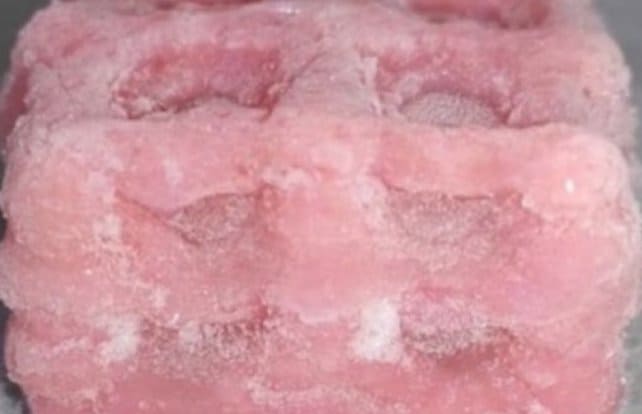
Structures produced using the technique – which is claimed to be a world-first - could be used to produce scaffolds for tissue regeneration and even to produce entire replica organs.
Described in the journal Scientific Reports the technique uses dry ice to rapidly cool a hydrogel ink as it is extruded from a 3D printer. After being thawed, the gel formed is as soft as body tissues, but doesn’t collapse under its own weight, which has been a problem for similar techniques in the past.
Dr Antonio Elia Forte, one of the researchers from the Department of Bioengineering at Imperial, said: “Cryogenics is the novel aspect of this technology – it uses the phase change between liquid and solid to trigger polymerisation and create super soft objects that can hold their shape. This means that the technology has a wide variety of possible uses.”
Regenerating damaged tissue by ‘seeding’ porous scaffolds with cells and encouraging them to grow allows the body to heal without the issues that normally affect tissue-replacing transplant procedures, such as rejection by the body.
The use of scaffolds is becoming more common and varied in its applications, but this new technique is special in that it creates super-soft scaffolds that are like the softest tissues in the human body and could help to promote this regeneration. In particular, there might be future potential in seeding neuronal cells; those involved in the brain and spinal cord.
The researchers tested the 3D-printed structures by seeding them with dermal fibroblast cells, which generate connective tissue in the skin, and found that there was successful attachment and survival.
This success, alongside previous research, could lead to further possibilities around the growth of stem cells, which is medically exciting due to their ability to change into different types of cells. The technique could be used to create replica body parts or even whole organs allowing scientists to carry out experiments not possible on live subjects.




Project to investigate hybrid approach to titanium manufacturing
What is this a hybrid of? Superplastic forming tends to be performed slowly as otherwise the behaviour is the hot creep that typifies hot...